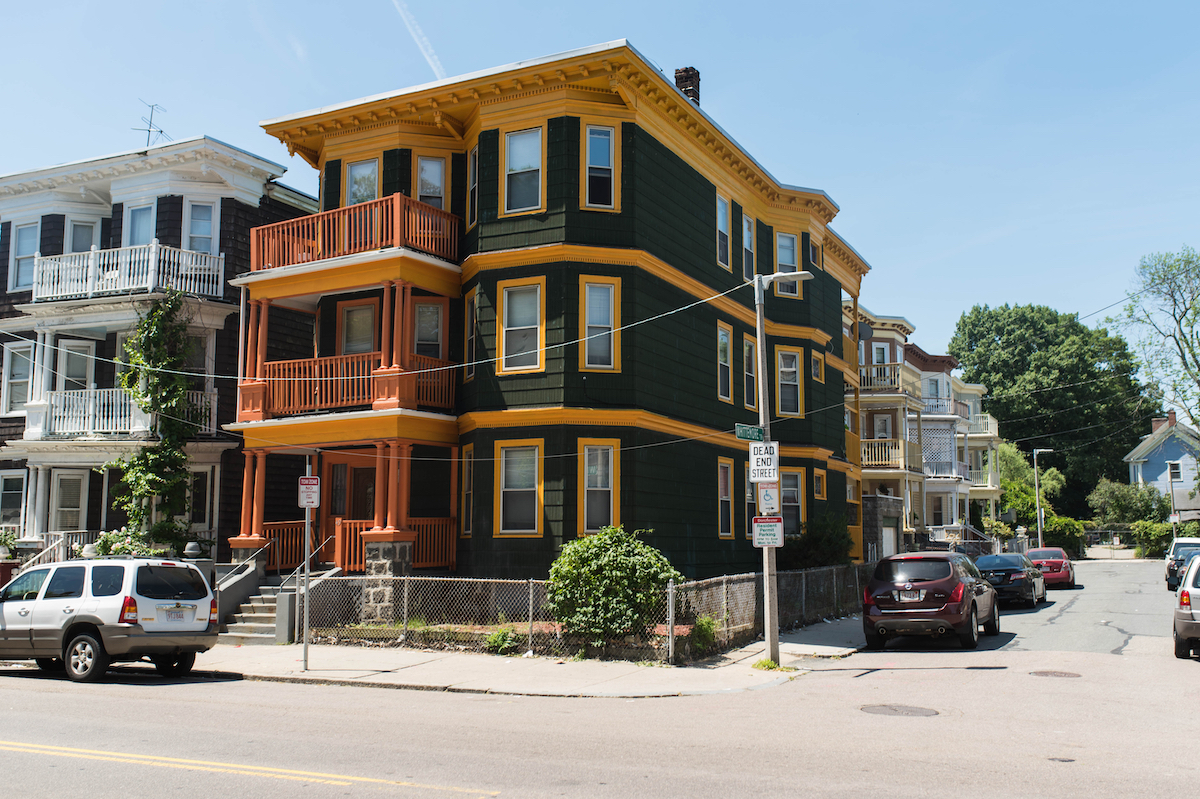The Secret to Retiring Before You're 40, According to Someone Who Did It
"Our first experience proved that we could make a consistent income," says this semi-retired teacher.

Early retirement sounds like one of those pie-in-the-sky dreams that rarely becomes a reality. But Bryce Stewart, a sixth-grade schoolteacher and a father of four girls, figured out how to do just that. Now, he and his wife, who are not yet 40, are semi-retired and sitting on a portfolio worth $1 million. The secret? Multi-housing real estate investments.
It's probably no surprise that owning a rental property is a great first step toward generating passive income and ultimately achieving financial freedom. But while you may think it's not easy to do if you don't have a boatload of cash to lay out up front, it's not impossible, as Stewart proves. "A house is your biggest monthly expense and the largest asset you will probably ever own, so your first home purchase can mean the difference between financial freedom and financial ruin," he says.
After learning the hard lessons of multi-housing real estate investing, Stewart wrote a book on the subject called House Hacker's Guide to the Galaxy: Use Your Home to Make Millions and Retire Early. Read on for his best tips, which he shared with Best Life, for making money without really trying. And for more little ways to save your hard-earned cash, check out 17 Clever Ways Stores Deceive You Into Spending More Money.
Don't buy new construction in a hot market.

Newer properties tend to sell at a premium. This leaves very little room for an increase in value over the near term. The Stewart's first purchase occurred in a frothy market, and they bought a brand new, luxury condominium. "The value really only had one direction to go—down," says Stewart.
Investors buy properties that still have "meat on the bone" where improvements would increase the resale value, he explains. "New construction tends to be priced at the high-water mark when you purchase, not leaving much room for future profit." And for more house-buying tips, check out The No. 1 Sign You Shouldn't Buy That House, According to Realtors.
Make sure comparable homes are renting for higher than it'll cost you to cover the basics.

Calculate your potential monthly carrying costs. This number is typically the sum of the mortgage payment (principal & interest or P&I), real estate taxes (T), and homeowner's insurance (I). The PITI is the fixed carrying costs of homeownership. For a condominium, include your monthly Homeowner's Association (HOA) dues. Then research the prevailing rents in your market for a house like yours. If the PITI total is higher than comparable rents and you are forced to move within a few years, you may end up losing money, which happened to the Stewarts.
"We bought a one-bedroom condo; two years later, we discovered we were expecting a child and needed to move into something larger," says Stewart. "We owed $152,000, and similar units were selling for $85,000. So we couldn't afford to sell." Stewart thought about renting the condo to a tenant, but the highest reasonable rent was $1,100, and his monthly costs of ownership were $1,400, so he determined he would be losing $300 a month.
If the Stewarts had shopped more shrewdly, they could have purchased a three-bedroom home for $120,000 to $140,000 with monthly carrying costs closer to $1,100. Two years later, if moving became necessary, they could have easily rented a house like this to tenants for around $1,300 per month. "Instead of losing $300 per month, we could have owned a property that earned $200 per month in extra income, which would have been a $500 a month difference," he says. And for more ways you're secretly throwing money away, check out This Is the Biggest Waste of Money You're Spending Without Knowing It.
Consider a duplex, triplex, or quadruplex as a first purchase.

Smaller multi-family units give you the opportunity to collect rent and offset the costs of ownership while living in the property. The Stewarts' second purchase was a duplex. "The total monthly cost of ownership was around $1,200," explains Stewart. "But we moved in to one of the units, and a tenant was living in the other unit. The rent was $600, which paid half of our costs and drastically reduced the amount of money we had to direct towards our own housing. That was crucial as we quickly had two daughters to begin caring for and a $300 monthly loss from our first condo."
The Stewarts bought the duplex using a U.S. Federal Housing Administration (FHA) loan, which only required a 3.5 percent down payment. This kind of loan product is only available to buyers who are purchasing an owner-occupant property, and not available to those buying solely for investment purposes.
"Because we were willing to live in one of the units in the duplex temporarily, we were able to buy the property for a very small acquisition cost," Stewart says. "We stayed for a few years, and slowly improved both the unit we lived in and the other unit. We've moved out now, and that duplex generates over $1,200 per month in excess profits." And for more tips on finances, home-owning, and more sent right to your inbox, sign up for our daily newsletter.
Once you can afford it, move on to the next property.

If your life circumstances allow it, repeat the steps above. Buy and live in a multi-family property, make it nice, rent the units for a monthly profit, and move to another property to begin the process over again.
The Stewarts' experience with the duplex convinced them to buy a triplex next. "It wasn't easy. But our first experience proved that we could make a consistent income from renting out apartments," Stewart says. "So we did it again. By the time we moved out of the triplex, we were ready to settle into a single-family home close to an elementary school for our daughters. The duplex and triplex produced a combined $3,000 per month in profits. We used these profits to pay for the $1,500 PITI on our family home and pocketed the remaining $1,500. This allowed us to really begin saving money." It put the Stewarts on a strong path toward financial freedom, and now, semi-retirement and a $1 million portfolio. And for more on where's the best place to go once you've achieved financial freedom, This Is the Best State to Retire to in America, According to Data.





















